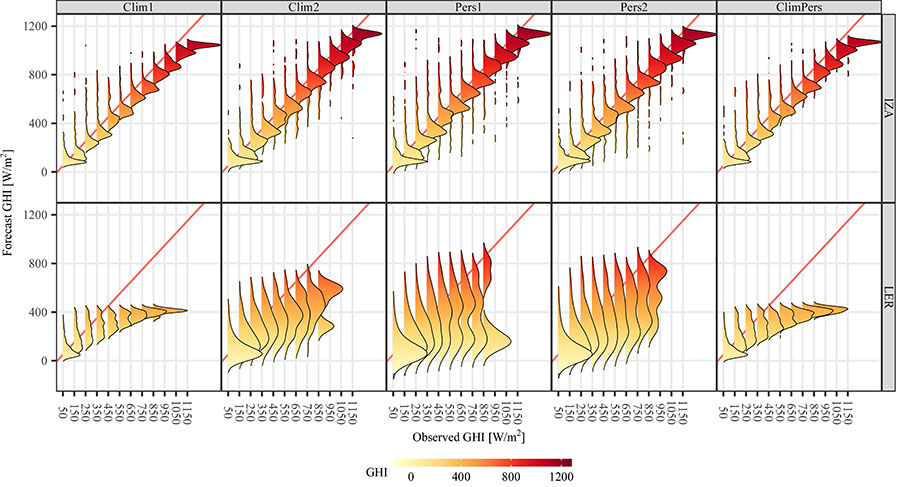From the Journal: Journal of Renewable and Sustainable Energy
WASHINGTON, D.C., September 24, 2019 — Being able to accurately forecast how much solar energy reaches the surface of the Earth is key to guiding decisions for running solar power plants.
While day-ahead forecasts have become more accurate in recent years, the solar community lacks a unified verification procedure, and assessing how one forecast compares to another is difficult. New work in the Journal of Renewable and Sustainable Energy, from AIP Publishing, looks to provide a standard of reference to the field.
Researcher Dazhi Yang proposed an improved way to assess day-ahead solar forecasting. The proposed method combines two popular reference methods for weather forecasting, namely persistence and climatology. Using a weighted linear combination of both methods, his approach provides a new way to gauge the skill of a forecaster.
“There is a large collection of solar forecasting works in the literature. However, all papers claim superiority, which is clearly not possible,” Yang said. “Without a standardized reference method to gauge forecast accuracy, we cannot compare methods reported in different papers, using different data from different locations and timescales.”
Persistence reference methods assume weather does not change from day to day, and tomorrow’s forecast can be drawn from today’s observations. Climatology examines the long-term averaged observations over time to generate a forecast.
“It’s generally unclear which type of forecast is more accurate, making it difficult to determine the best forecasters,” Yang said. “A standard of reference is much needed in the community, so that forecasters can calculate the skill score and thus perform a direct, ‘apples-to-apples’ comparison.”

To demonstrate the universality of the proposed method, Yang applied the framework to a dataset from the Baseline Surface Radiation Network. The network’s 66 stations can be found on all seven continents and on an island in every ocean, and has been operating for 27 years.
For some applications, Yang’s combined approach proved to be more optimal than either climatology or persistence alone.
If the goal is to assess the reliability of a forecast, he found his combined reference is optimal. If the goal is to maximize how much a forecast was able to differentiate between different forecasting situations, then forecasters should use a form of the persistence approach that considers the hourly changes of the weather.
Such conditional findings might provide an answer for why there isn’t a consensus in the first place, he said. Yang hopes that, with the help of journal editors, who might bolster the profile of the new reference method, this framework will become the standard of reference for day-ahead solar forecasting.
###
For more information:
Larry Frum
media@aip.org
301-209-3090
Article Title
Standard of reference in operational day-ahead deterministic solar forecasting
Authors
Dazhi Yang
Author Affiliations
Agency for Science, Technology and Research
